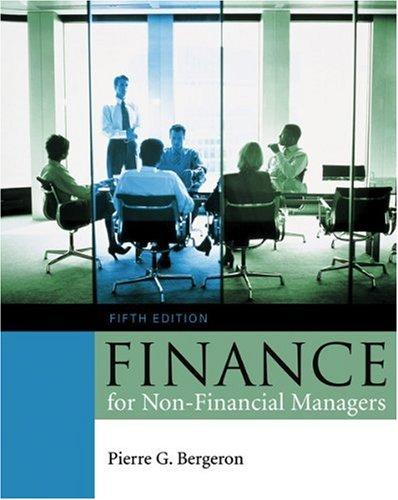Answered step by step
Verified Expert Solution
Question
1 Approved Answer
In early 2 0 1 8 , Diana Mulhall found herself at a pivotal financial crossroads. After years of dedicated service at a management consultancy
In early Diana Mulhall found herself at a pivotal financial crossroads. After years of dedicated service at a management consultancy firm, she made the bold decision to embark on a new journey by starting her own risk assessment advisory business in her hometown of Chicago. This career move prompted Mulhall to evaluate her assets, including a onebedroom condo in Toronto's bustling financial district. As she weighed her options between selling the property or transforming it into a rental investment, Mulhall delved into a comprehensive analysis, considering various factors such as market trends, neighborhood dynamics, potential returns, and associated risks.
Background and Property Details:
Mulhall's Toronto condominium, situated in the story boutique building at Nelson St offered luxurious loftstyle living with amenities like hour concierge service, exercise facilities, and a rooftop bar. The onebedroom unit boasted a prime location, being just a kilometer away from the Canadian Imperial Bank of Commerce CIBC headquarters and within walking distance of various amenities. Purchased in July for $ the property had appreciated significantly amid Toronto's booming real estate market.
Neighborhood Dynamics:
The condo was located in the Waterfront Communities The Island neighborhood, known for its proximity to Lake Ontario and the bustling business district. The area experienced a notable population increase of between and with a majority of residents falling within the workingage demographic. Its central location earned it high transit and walk scores, making it highly desirable for both residents and investors.
Market Trends:
Toronto's real estate market had been thriving, with consistent rent increases averaging annually since Vacancy rates were virtually nonexistent, indicating strong demand for rental properties in central Toronto. Institutional investments in the city further reinforced its robust market outlook, with cap rates for multifamily properties experiencing a steady decline over the years.
Options Considered:
Mulhall contemplated two primary options: selling the condo or converting it into a rental property. Selling would offer immediate liquidity but might not maximize longterm returns. On the other hand, leasing the unit could provide a steady income stream, albeit with ongoing expenses and potential risks.
Financial Analysis:
To assess the viability of renting out the condo, Mulhall gathered data on recent sales and leases in her building. This information allowed her to estimate potential rental income and expenses, factoring in variables such as vacancy rates, rent growth, and future sales price. With benchmark assumptions in place, Mulhall calculated the expected rate of return over a tenyear holding period.
Risk Assessment:
As a seasoned expert in risk management, Mulhall recognized the importance of mitigating potential risks associated with the investment. Key considerations included the uncertainty surrounding future sales prices, rental rate fluctuations, and the property's occupancy levels. Additionally, Mulhall weighed the impact of currency fluctuations, given that rental income would be received in a foreign currency due to her commuting history across the border.
Decision Making:
In her decisionmaking process, Mulhall sought to strike a balance between maximizing financial returns and managing potential risks. While selling the condo offered immediate liquidity, Mulhall recognized the longterm value of retaining the property as a rental investment, particularly given Toronto's thriving real estate market and high demand for rental properties. By leveraging her expertise in risk assessment, Mulhall felt confident in her ability to navigate the uncertainties associated with property ownership and rental
Create a tenyear pro forma for the propertylevel cash flows using the provided Excel proforma tem
All yellow cells must be filled out and rationalized.
Does anything stand out here?
Given your analysis, should Diana rent or sell her condo?
CAPEX share of NOI Your answer should incorporate;
Is the IRR generated sufficient?
Consider the highest and best use theory; is the condo worth more as a rental than the sale price?
Any nonfinancial factors ie demographics, foreign ownership, rd party information, etc. you feel relevant.
current noi is please fill the excel sheet
Create a tenyear pro forma for the propertylevel cash flows using the provided Excel proforma tem
ROI if sale is made now
Initial InvestmentPurchase price $
Current ValueSale Price $
Net Gain SP $
ROI Net Return Cost of investment
ROI
Therefore, ROI
create a year table for the below
Rent
Vacancy
Total Revenue
Maintenance
Property Tax
Insurance
Total Expenses
NOI
Sales Price
Sales Expenses

Step by Step Solution
There are 3 Steps involved in it
Step: 1

Get Instant Access to Expert-Tailored Solutions
See step-by-step solutions with expert insights and AI powered tools for academic success
Step: 2

Step: 3

Ace Your Homework with AI
Get the answers you need in no time with our AI-driven, step-by-step assistance
Get Started


